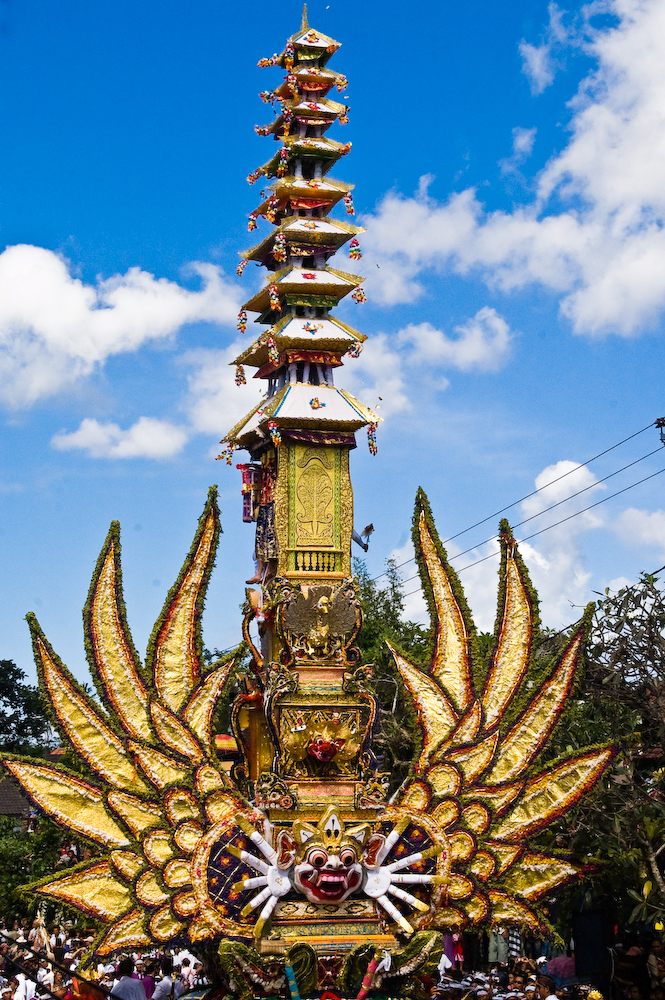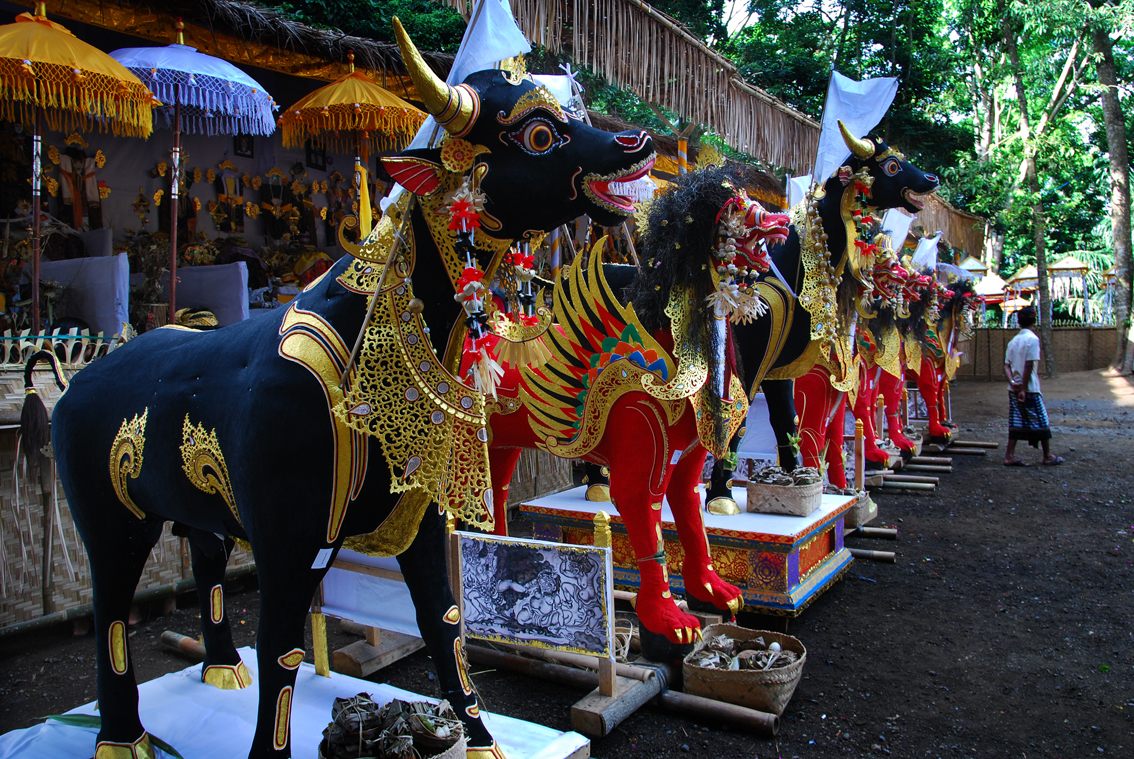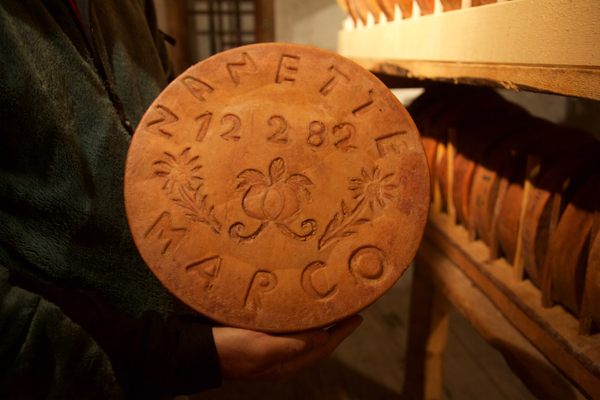The Balinese Cremation Ceremony Admired by David Bowie

A Balinese funeral procession. (Photo: Flickr/William Cho)
When David Bowie’s will was made public on Friday, it revealed plenty of the unique details you expect from the legendary figure’s final requests. Among the most interesting was the singer’s instructions for his cremation. As the New York Times reports, “Mr. Bowie said in the will that he wanted his body shipped to Bali and cremated there ‘in accordance with the Buddhist rituals of Bali.’ But he added that if cremation in Bali were not possible, he wanted his ashes scattered there nevertheless.”
Bowie’s appreciation of Bali, and Indonesia as a whole, can be traced back to a trip he took with friend and collaborator Iggy Pop, which was recounted in the 1984 song “Tumble and Twirl.” The lyrics don’t indicate that Bowie had the opportunity to observe a Ngaben—the traditional Balinese cremation ceremony he was likely referring to in his will—but it’s no surprise that he admired this beautiful and elaborate ritual.


A Wadah, used to transport the body during the funeral procession. (Photo: Flickr/Guillaume)
Like an Irish Wake or a New Orleans second line, the Ngaben combines celebration with sorrow in a multi-part ritual that lasts almost two weeks. It’s a tradition unique to the island: Most Balinese practice a form of Hinduism unique to the island, which mixes traditional Hindu beliefs with Buddhism and local animist religions. This religious heritage has given rise to rituals only practiced on Bali, including the Ngaben. The ritual’s name comes from the word ngabuin or ngabu, which means “turn to ash.”
If the family has the means to hold an individual Ngaben, the first step is consultation with a priest to determine the day of the ceremony. In the interim, the family will construct a Wadah—a tower-like structure built of papier-mache, wood, and bamboo—and a Lembu—a sarcophagus in the shape of an ox. Members of the royal family or other high-caste individuals have more elaborate ceremonies, called Pelebon, and may have Lembu in the shape of other animals, such as a lion or dragon.

Lembu, used as containers during cremation. (Photo: Flickr/William Cho)
Once the day of the ceremony has arrived, the body of the deceased is placed in the Wadah and is taken to the creation site in a procession with a joyful, parade-like atmosphere. In Bali, Ngaben are a time to celebrate and help the deceased move on from their previous life, and the procession is often accompanied by an orchestra and crowds of mourners carrying offerings and memorials for the deceased. After reaching the cremation site, the body is transferred to the Lembu and a priest oversees the burning of the body. Finally, 12 days after the cremation, the ashes are scattered into the sea, or a river leading to the sea in a final act of purification.
For the Balinese, this is one of their most important ceremonies, as it represents the release of the deceased’s spirit from the body, allowing them to reincarnate or find final rest in Moksha, free from the cycle of reincarnation and death. Fittingly, it requires significant effort, time, and expense; to help defray the costs of a Ngaben, many Balinese temporarily bury their deceased, to be exhumed for participation in a mass Ngaben at a later date.
Bowie was cremated without ceremony shortly after his death on January 10th and plans for the scattering of his ashes have not been announced. Regardless of the specifics of the ceremony, his fans around the world have created numerous memorials celebrating his life, echoing the intention and tone of the Ngaben.
A Balinese royal cremation ceremony (Pelebon). (Video: Youtube/Travel2Asia)












Follow us on Twitter to get the latest on the world's hidden wonders.
Like us on Facebook to get the latest on the world's hidden wonders.
Follow us on Twitter Like us on Facebook